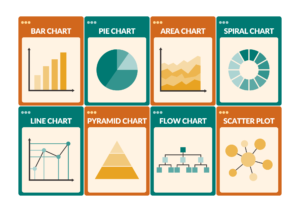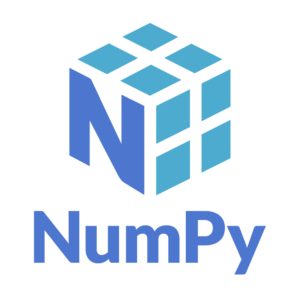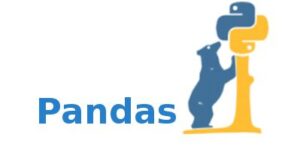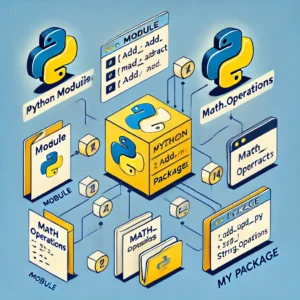Understanding the Types of Machine Learning: A Comprehensive Guide
Machine learning, a subset of artificial intelligence (AI), is transforming industries by enabling computers to learn from data and make predictions or decisions without being explicitly programmed. To harness the power of machine learning, it’s crucial to understand its different types and how they can be applied to solve real-world problems. In this blog, we’ll explore the three main types of machine learning: Supervised Learning, Unsupervised Learning, and Reinforcement Learning. We’ll also delve into subtypes and provide practical examples to illustrate each approach.
1. Supervised Learning
Supervised learning is the most widely used type of machine learning. It involves training a model on a labeled dataset, meaning that each training example is paired with an output label. The goal is to learn a mapping from inputs to outputs, so the model can predict the labels of unseen data accurately.
1.1. How Supervised Learning Works
In supervised learning, the algorithm learns from the training data, which includes both the input data and the corresponding output labels. The model iteratively adjusts its parameters to minimize the error between its predictions and the actual labels, usually by using a method like gradient descent. Once trained, the model can be used to predict the labels of new, unseen data.
1.2. Types of Supervised Learning
- 1.2.1. Classification:
- Description: Classification involves predicting a discrete label (category) for an input. The output is a class label.
- Example: Email spam detection, where the model classifies emails as “spam” or “not spam.”
- Algorithms: Logistic Regression, Support Vector Machines (SVM), Decision Trees, Random Forests, k-Nearest Neighbors (k-NN), and Neural Networks.
- 1.2.2. Regression:
- Description: Regression involves predicting a continuous value for an input.
- Example: Predicting house prices based on features like location, size, and number of bedrooms.
- Algorithms: Linear Regression, Ridge Regression, Lasso Regression, and Support Vector Regression (SVR).
1.3. Real-World Applications of Supervised Learning
- Healthcare: Diagnosing diseases by classifying medical images (e.g., detecting cancerous tumors from X-rays).
- Finance: Credit scoring systems that assess the likelihood of a borrower defaulting on a loan.
- Marketing: Predicting customer churn to retain customers and improve satisfaction.
1.4. Advantages and Challenges
- Advantages:
- High accuracy when trained on sufficient and well-labeled data.
- Versatile across various domains and industries.
- Challenges:
- Requires a large amount of labeled data, which can be expensive and time-consuming to gather.
- Model performance can degrade on imbalanced datasets or when the training data is not representative of real-world scenarios.
2. Unsupervised Learning
Unsupervised learning involves training a model on a dataset without labeled outputs. The model tries to learn the underlying structure of the data, such as identifying patterns, groupings, or associations.
2.1. How Unsupervised Learning Works
Unlike supervised learning, unsupervised learning does not provide the model with explicit instructions on what to predict. Instead, the model explores the data and attempts to find hidden structures or relationships within it.
2.2. Types of Unsupervised Learning
- 2.2.1. Clustering:
- Description: Clustering involves grouping similar data points together based on their features. The number of clusters may or may not be predefined.
- Example: Customer segmentation in marketing, where customers are grouped based on purchasing behavior.
- Algorithms: K-Means, Hierarchical Clustering, DBSCAN, and Gaussian Mixture Models (GMM).
- 2.2.2. Dimensionality Reduction:
- Description: Dimensionality reduction involves reducing the number of features in a dataset while retaining as much information as possible. This is useful for visualization or speeding up processing.
- Example: Principal Component Analysis (PCA) used for visualizing high-dimensional data in 2D or 3D.
- Algorithms: PCA, t-SNE, and Autoencoders.
- 2.2.3. Anomaly Detection:
- Description: Anomaly detection involves identifying data points that do not conform to the expected pattern or distribution.
- Example: Detecting fraudulent transactions in financial data.
- Algorithms: Isolation Forest, One-Class SVM, and Autoencoders.
2.3. Real-World Applications of Unsupervised Learning
- Customer Segmentation: Grouping customers based on purchasing habits to tailor marketing strategies.
- Anomaly Detection: Detecting unusual patterns in network traffic to identify potential cybersecurity threats.
- Recommendation Systems: Suggesting products or content to users based on their behavior and preferences.
2.4. Advantages and Challenges
- Advantages:
- Does not require labeled data, making it suitable for tasks where labeling is impractical or impossible.
- Can discover hidden patterns or structures in data that might not be immediately apparent.
- Challenges:
- The results are often harder to interpret and validate compared to supervised learning.
- May require domain expertise to make sense of the discovered patterns or clusters.
3. Reinforcement Learning
Reinforcement learning (RL) is a type of machine learning where an agent learns to make decisions by interacting with an environment. The agent takes actions and receives rewards or penalties based on the outcomes of those actions. The goal is to learn a policy that maximizes the cumulative reward over time.
3.1. How Reinforcement Learning Works
In reinforcement learning, the agent explores the environment by taking actions, observing the resulting state, and receiving feedback in the form of rewards. Over time, the agent learns to associate certain actions with higher rewards and develops a strategy (policy) to maximize its cumulative reward.
3.2. Key Concepts in Reinforcement Learning
- Agent: The learner or decision-maker (e.g., a robot, software agent).
- Environment: The external system with which the agent interacts.
- State: A representation of the environment at a particular point in time.
- Action: A decision made by the agent that affects the state.
- Reward: Feedback from the environment that evaluates the action taken by the agent.
- Policy: A strategy that defines the action the agent should take in a given state.
3.3. Types of Reinforcement Learning
- 3.3.1. Model-Free RL:
- Description: The agent learns directly from interactions with the environment without modeling the environment’s dynamics.
- Example: Q-Learning, where the agent learns the value of actions without knowing the exact model of the environment.
- 3.3.2. Model-Based RL:
- Description: The agent builds a model of the environment’s dynamics and uses it to plan its actions.
- Example: Dyna-Q, which combines direct learning from experiences with planning using a model.
3.4. Real-World Applications of Reinforcement Learning
- Robotics: Training robots to perform tasks like navigating a maze, picking up objects, or assembling products in a factory.
- Gaming: Developing AI agents that can play complex games like Chess, Go, or StarCraft II at superhuman levels.
- Finance: Algorithmic trading, where agents learn to make buy/sell decisions based on market conditions to maximize profits.
3.5. Advantages and Challenges
- Advantages:
- Capable of learning complex strategies through trial and error, even in environments where explicit instruction is difficult.
- Can be applied to a wide range of domains, from games to robotics to finance.
- Challenges:
- Requires a large number of interactions with the environment, which can be time-consuming and computationally expensive.
- The balance between exploration (trying new actions) and exploitation (using known actions that yield high rewards) can be challenging to manage.
4. Semi-Supervised Learning
Semi-supervised learning is a hybrid approach that combines a small amount of labeled data with a large amount of unlabeled data during training. This method is particularly useful when labeled data is scarce or expensive to obtain.
4.1. How Semi-Supervised Learning Works
The algorithm first uses the labeled data to learn an initial model. Then, it leverages the unlabeled data to refine and improve this model by using techniques like self-training or co-training, where the model iteratively labels the unlabeled data and retrains itself.
4.2. Real-World Applications of Semi-Supervised Learning
- Natural Language Processing (NLP): Leveraging large corpora of text data with few labeled examples for tasks like sentiment analysis or language translation.
- Image Recognition: Utilizing vast collections of unlabeled images alongside a few labeled ones to train models for tasks like object detection.
- Healthcare: Diagnosing diseases with limited labeled medical images but abundant unlabeled images.
4.3. Advantages and Challenges
- Advantages:
- Reduces the need for large amounts of labeled data, making it more feasible for domains where labeling is expensive or time-consuming.
- Can achieve better performance than purely unsupervised learning by utilizing the labeled data.
- Challenges:
- The model’s performance is still dependent on the quality of the labeled data.
- The process of semi-supervised learning can be complex and may require careful tuning to avoid errors in self-labeled data.
5. Self-Supervised Learning
Self-supervised learning is a type of unsupervised learning where the model is trained on a task that doesn’t require labeled data. The model learns to predict part of the input from other parts, essentially creating its own labels from the data.
5.1. How Self-Supervised Learning Works
The model is trained on a proxy task where it learns to predict one part of the data from another. For example, in natural language processing, a model might learn to predict the next word in a sentence based on the preceding words. This learning process generates useful representations of the data, which can then be fine-tuned for specific downstream tasks.
5.2. Real-World Applications of Self-Supervised Learning
- Natural Language Processing (NLP): Models like BERT (Bidirectional Encoder Representations from Transformers) use self-supervised learning to understand language, leading to significant improvements in tasks like translation, sentiment analysis, and question-answering.
- Computer Vision: Using image data to learn representations that can be applied to tasks like image classification, object detection, and segmentation without requiring labeled images.
5.3. Advantages and Challenges
- Advantages:
- Eliminates the need for large labeled datasets by leveraging unlabeled data.
- Produces general-purpose representations that can be used across various tasks, reducing the need for task-specific models.
- Challenges:
- The proxy task needs to be well-designed to ensure that the learned representations are useful for downstream tasks.
- Training can be computationally intensive, especially for large-scale models.
6. Transfer Learning
Transfer learning involves taking a pre-trained model from one domain and fine-tuning it for a new, related task. This approach is highly effective when there is limited labeled data available for the target task.
6.1. How Transfer Learning Works
The process involves using a model trained on a large dataset (e.g., ImageNet for images) and transferring its knowledge to a smaller, domain-specific dataset. The pre-trained model acts as a feature extractor, and only the final layers are retrained on the new dataset, reducing the need for extensive training data and computational resources.
6.2. Real-World Applications of Transfer Learning
- Computer Vision: Fine-tuning pre-trained models like ResNet or VGG on specific image classification tasks with limited labeled data.
- Natural Language Processing (NLP): Adapting models like GPT, BERT, or T5 to new language tasks such as sentiment analysis or named entity recognition.
- Healthcare: Applying models trained on general medical images to specific tasks like detecting a rare disease.
6.3. Advantages and Challenges
- Advantages:
- Reduces the need for large amounts of labeled data, making it easier to develop models in domains with limited data availability.
- Accelerates the training process since the model has already learned useful features from a related task.
- Challenges:
- The source and target tasks need to be sufficiently related for transfer learning to be effective.
- Fine-tuning requires careful balancing to avoid overfitting to the new task.
7. Ensemble Learning
Ensemble learning involves combining the predictions of multiple models to improve overall performance. The idea is that by leveraging the strengths of different models, the ensemble can produce more accurate and robust predictions than any single model.
7.1. How Ensemble Learning Works
The ensemble can be created using various techniques, including:
- Bagging: Training multiple instances of the same model on different subsets of the training data and averaging their predictions. Random Forest is a popular bagging technique.
- Boosting: Sequentially training models, where each subsequent model focuses on correcting the errors of the previous ones. Algorithms like AdaBoost and Gradient Boosting are examples of boosting.
- Stacking: Combining the predictions of multiple models using a meta-model, which learns how to best combine the base models’ outputs.
7.2. Real-World Applications of Ensemble Learning
- Finance: Predicting stock prices or credit risks using a combination of models to enhance accuracy.
- Healthcare: Diagnosing diseases by combining the predictions of multiple diagnostic models.
- Marketing: Improving customer churn prediction by leveraging the strengths of various classification algorithms.
7.3. Advantages and Challenges
- Advantages:
- Can significantly improve prediction accuracy by combining the strengths of multiple models.
- Reduces the risk of overfitting compared to using a single model.
- Challenges:
- More complex to implement and interpret than individual models.
- Requires more computational resources, especially when dealing with large ensembles.




